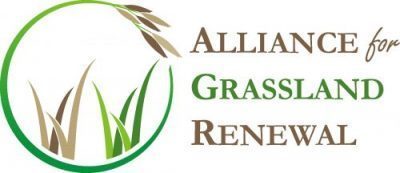The usual start of the grazing season for us has been March 15 for ryegrass and April 15 for tall fescue-based pastures. This year we turned out March 2 on the ryegrass and April 1 on the rest of the pastures, and we have good growth ahead of each of our groups.
We start the grazing season on our tall fescue-based pastures earlier than is typically recommended as a way of controlling seed head production. Cattle will readily eat the boot to early-bloom stage seed heads when they move into a new pasture, so by turning out early and moving quickly we can cover most of the pastures and get most of the seed heads eaten off. Once we start the second grazing cycle the vegetative tillers and clover has really come out. The third cycle will be mostly red clover and warm season perennials (dallisgrass, bermudagrass, and purple top), and annuals including crabgrass and foxtails. Our fourth cycle will be on whatever stockpiled growth has accumulated, and this will be a mix with a lot of tall fescue, but also a mix of all those other plants.
With the early grazing came an early flush of face flies. I think some of these pests winter over, so in recent years we have put out fly traps early to try to suppress that early population. The traps are giant sticky fly paper attached to a protein tub bolted to the top of our barrel mineral feeders. If you are having trouble visualizing that, see the photo. The wire covering the fly paper is necessary to keep the cattle from pulling off the fly paper for some (but not all) groups. I did a demonstration with this technique a few years ago when the fly population was initially high, and I caught thousands of flies each day until the population started to decline.

It is also time for us to start putting out crabgrass seed. We have one pasture that we rotate between ryegrass and oats in the winter and crabgrass and johnsongrass in the spring. This is mostly our local small crabgrass, so my plan is to put out Quick-n-Big Crabgrass from Dalrymple Farms in Oklahoma as we graze through the ryegrass on this rotation. There are several different crabgrasses available now, but we have been especially impressed with the Quick-n-Big.
Finally, our new Novel Endophyte Tall Fescue fields continue to look better all the time. We are nearly done grazing them all for the first time. Many advisors recommend cutting these new stands for hay the first year, but our plan is to graze them several times through the spring to stimulate them to tiller. The Estancia plus ArkShield pasture had a lot of volunteer ryegrass, so we grazed it very early, and are now grazing it for the second time. This has helped the fescue dominate over the ryegrass, and that stand looks especially good.
Our poorest stand is Jesup MaxQII and it was planted in the lowest initial fertility field we had. This field also had a lot of crabgrass that made a thick mat that did not rot down in the dry fall weather. As of this morning, this pasture looks much better than I ever thought possible, and can now be upgraded to good condition. Even where there were only a few plants in a foot of drill row, there are now some large and healthy plants.
April is my favorite month, and the first half of this one has been great. We are now focused on getting our hay equipment ready to go and watching the cattle respond to the fresh grass. While all the cattle are looking better, it was obvious this morning that the mature cow herd who are grazing that boot-stage tall fescue are feeling hot. They were shaded up today by 10 am and many were panting at a temperature of 68 degrees! The young cows, bred heifers and finishers were at the same time happily grazing in the sun on Novel Endophyte Tall Fescue and looking more like cattle should on a warm day in April.
~ Matt Poore, NC State and the Alliance for Grassland Renewal
The Alliance for Grassland Renewal is a national organization focused on enhancing the appropriate adoption of novel endophyte tall fescue technology through education, incentives, self-regulation and promotion. For more resources or to learn more about the Alliance for Grassland Renewal, go to www.grasslandrenewal.org
